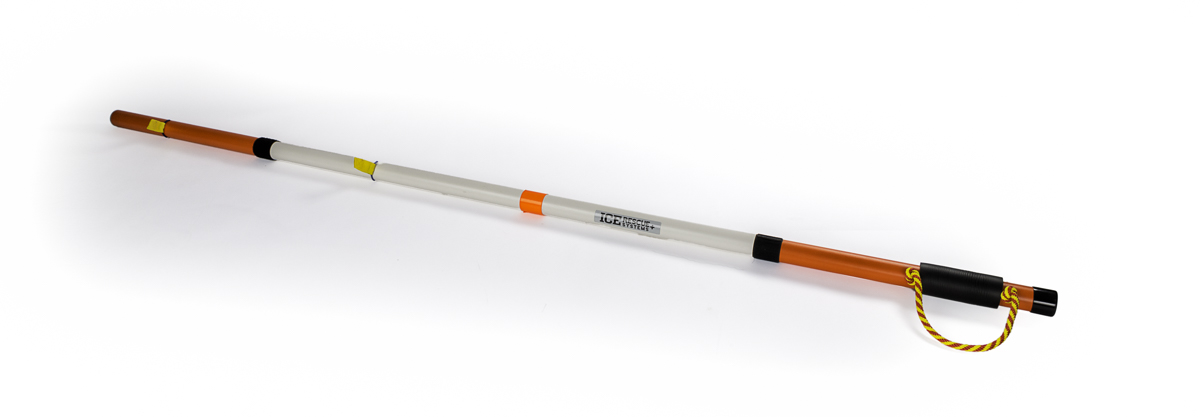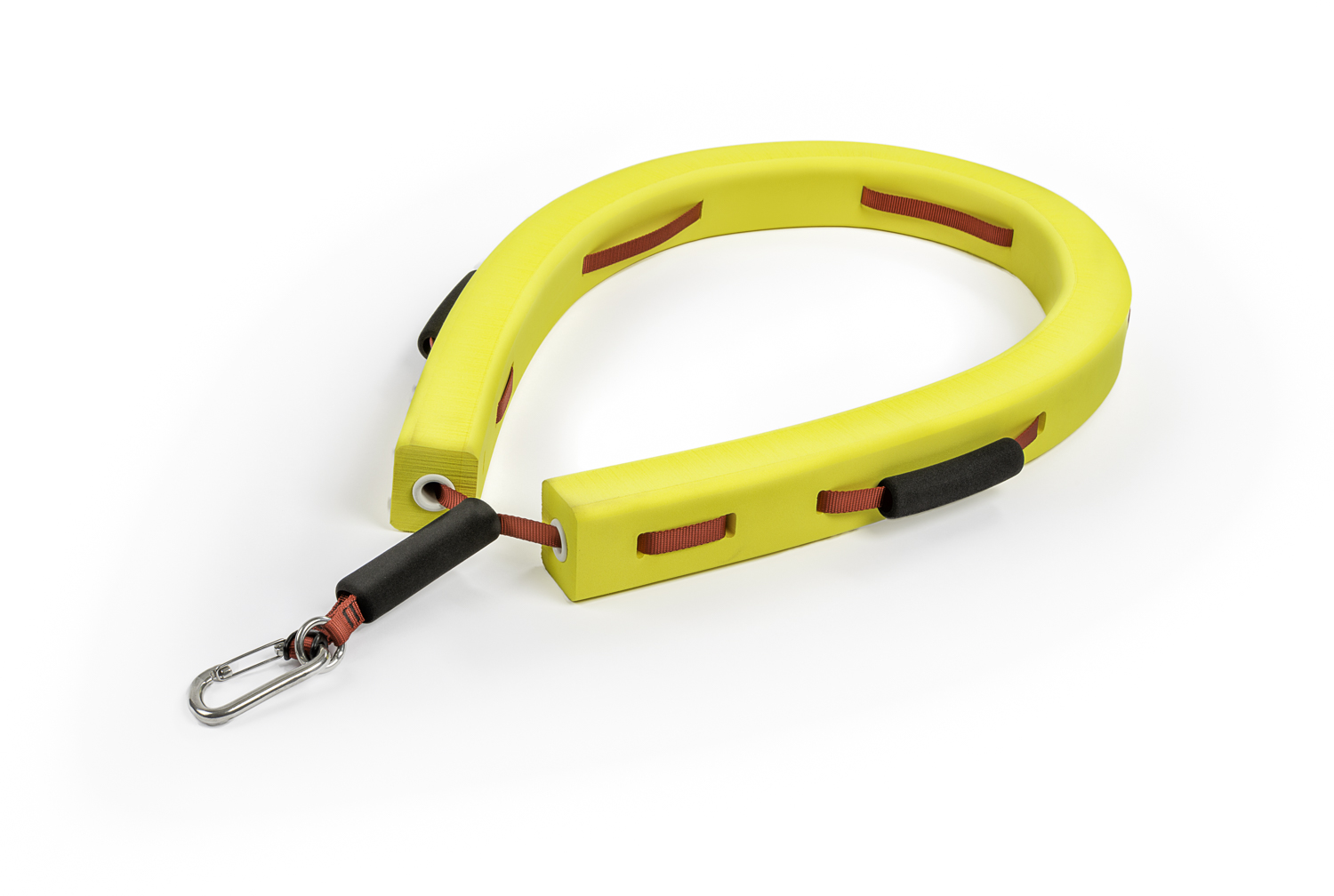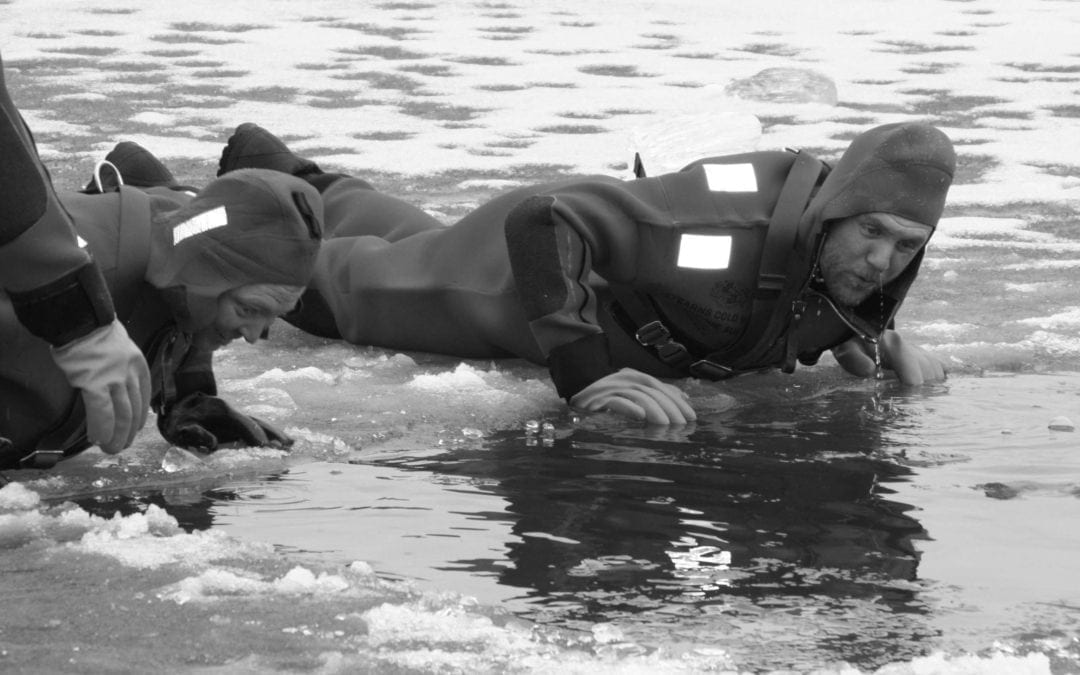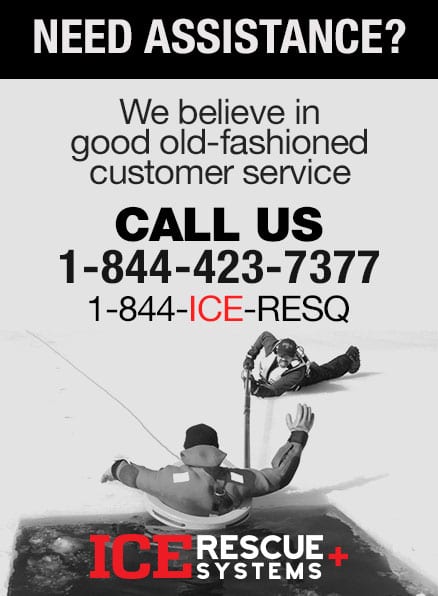By Bo Tibbetts
Public Safety personnel must consider and evaluate many aspects of the surface ice rescue when attempting a rescue, whether it is a person, or a dog that has fallen through the ice that may or may not be capable of getting themselves out unassisted. While evaluating these high risk/low frequency incidents, the rescuer’s safety is considered to be the highest priority.
All water response incidents should consider low to high risk ice rescue sequence procedures. These begin with the lowest risk, which is communication; then reach, throw, deploy, or go; and lastly helicopter operations, which has the highest risk factors involved. Communication is the simplest method that can be used and will only involve being able to talk the victim through the ice rescue sequence, and can be useful if the person is capable and able to assist with their own rescue. Establishing effective communication has often been the deciding factor for a quick and efficient rescue and is the best way to evaluate the condition of the victim. Effective communication can keep the public safety personnel safely on  shore.
shore.
9-1-1 Reach Pole
The second option in the rescue sequence is reaching out to the victim with a rescue device or tool. Again, the thought process is this, the victim is willing and able to assist in his or her own self rescue and extrication from the ice. Reaching out to them with the classic 9-1-1 reach pole can offer a longer reach device that puts distance between the rescue professional and the unstable ice conditions. Ice Rescue Systems believes strongly in minimizing any risk to the rescuer.

Throw Bag
Your third option is by means of throwing a rope to your victim. Most often throw bags consist of 75’ of water rescue line that floats. It is a great device that can reach out and touch our victim. While this is a very basic approach it is oftentimes the most effective method, however, most departments don’t take the time to practice throwing their bags. Accuracy with the throw bag is key to a successful rescue with this easy to use device, but it takes practice. With the use of the throw bag the victim may be able to pull themselves out of the ice and back to safe ground if they still have dexterity and strength. Keep in mind that the ice water is depleting their body temperature nearly twenty-five times faster than ambient air temperature.
Rapid Transport Sled
While the next two steps in the rescue sequence often involve both deploy and go, we must do this in a manner that first and foremost protects our rescue professional while offering the most efficient and best care to the hypothermic patient. This rescue method only happens if it has been established that the victim cannot self-extricate by means of communication, reach, or throw methods.
Real world ice rescue conditions typically consist of wind, blowing snow, open lake water, rough ice and sub-freezing temperatures. We recommend our Rapid Transport Sled, it has been designed specifically to go from open water, up onto the ice shelf, and through open water to the victim while aiding and giving support to the rescue professional. The Rapid Transport Sled only requires one rescuer that is tethered to shore and aided by rescue tenders. The R.T.S. offers weight displacement with ice runners and channels that prevent ice and snow build up. The Rapid Transport Sled is easily and quickly deployed, with no assembly or inflation required the R.T.S. is ready for deployment. The Rapid Transport Sled keeps your body’s center of gravity low and easily moves through open water and icy snow packed surfaces.

Ice Rescube Sling
Remember, the victim is hypothermic and very fragile, with no or limited dexterity they have the potential to easily lose their grip and submerge. The most important step is to establish victim buoyancy. We use the Ice Rescube Sling which offers the highest amount of buoyancy in the industry. Our Ice Rescube Sling easily deploys in less than 10 seconds from the time of victim contact. Once the Ice Rescube Sling is on the victim, we no longer have to worry about the victim submerging.
This final phase of the rescue operation is very critical for the hypothermic victim because they are fragile, susceptible and vulnerable to injury, and even death. It is crucial that we exercise extreme caution when extricating the victim from the ice hole and transporting them to the waiting ambulance. A victim with moderate to severe hypothermia should be handled very gently and kept in a horizontal position. When cold, the heart is very prone to ventricular fibrillation (VF) with any disturbance. Even cautious movement of a victim may induce VF. A victim who is moderately to severely hypothermic and not in cardiac arrest may experience severe cardiovascular stress if placed in a vertical position. The condition of the victim’s body is very fragile after exposure to extreme cold temperatures. During the extrication phase of the ice rescue, we slide the Rapid Transport Sled into the ice hole while simultaneously positioning our victim on the sled and securely attaching them to the Rapid Transport Sled. Next, we give the shore tenders the signal to bring us home. When being hauled from the ice hole the rescuer makes every effort to keep the victim as horizontal as possible. Caution, extracting a victim vertically can cause blood to pool in the legs resulting in a drop in blood pressure which can cause ventricular fibrillation (VF) or cardiac arrest. Our shore based personnel then begins to pull both victim and rescuer into shore in a slow and controlled manner.
As with all rescue techniques, procedures, and methods, they all require professional training. Ice Rescue Systems, offers student and instructor training courses. Contact icerescuesystems.com for more information. Ice Rescue Systems offers discounts to ERDI members.


